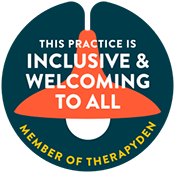Learn More About…
HASI Psychotherapy
Trauma & PTSD
Somatic Therapies
Expressive Arts Therapies
Equine Therapy
Dance Movement Therapy
Trauma
“The effects of unresolved trauma can be devastating. It can affect our habits and outlook on life, leading to addictions and poor decision-making. It can take a toll on our family life and interpersonal relationships. It can trigger real physical pain, symptoms, and disease. And it can lead to a range of self-destructive behaviors.” - Peter A. Levine
Somatic Therapies
“Trauma victims cannot recover until they become familiar with and befriend the sensations in their bodies. Being frightened means that you live in a body that is always on guard. Angry people live in angry bodies. The bodies of child-abuse victims are tense and defensive until they find a way to relax and feel safe. In order to change, people need to become aware of their sensations and the way that their bodies interact with the world around them. Physical self-awareness is the first step in releasing the tyranny of the past.” - Bessel A. van der Kolk
Somatic Therapy incorporates body-based practices, Neuroscience, and Psychobiology into traditional Talk Therapy. This Holistic approach is particularly beneficial to Trauma Survivors. Trauma impacts the Nervous System and brain functioning which often leaves traumatic experiences and trauma memories unprocessed in the body and unconscious mind, as Bessel van der Kolk famously stated, “The Body Keeps The Score.” This can lead to symptoms of PTSD (re-experiencing, flashbacks, angry outbursts, hyper vigilance, insomnia, anxiety, depression, chronic fatigue, chronic pain, dissociation, shame, and a fractured sense of Self) and requires understanding and focused attention to the mind-body connection during treatment and recovery.
Expressive Arts Therapies EXA
“Expressive art therapy integrates all of the arts in a safe, non-judgmental setting to facilitate personal growth and healing. To use the arts expressively means going into our inner realms to discover feelings and to express them through visual art, movement, sound, writing or drama. This process fosters release, self-understanding, insight and awakens creativity and transpersonal states of consciousness.”
– Natalie Rogers
Creativity, imagination, and self-expression can awaken our soul’s innate power to heal itself. Expressive Arts Therapies (EXA) include the full spectrum of creative mediums (Visual Arts, Illustration, Sculpture, Textiles, Film, Animation, Photography, Performing Arts, Theatre, Dance, Music, etc.) as clinically valuable in therapy. Our thinking, talking mind is only a small fraction of our psyche and experience. There is a vast, inner world of symbolic imagery that exists beneath our conscious awareness. It organizes the experiences, perceptions, thoughts, feelings, and behaviors that are too complex for words and consciousness. This is especially true for Survivors whose brain functioning has been overwhelmed by Trauma. When we connect with our inner world through imagination and creativity, we create meaningful opportunities to understand ourselves in new ways, regulate our emotions, rewire unconscious patterns and core beliefs, and reprocess meanings linked with traumatic memories.
*You don’t have to “be an artist” or “be good at art” to engage with Expressive Arts Therapies. The value of EXA is more about the act of being creative and how it affects your brain functioning, consciousness, self-awareness, and capacity to make new neural pathways, beliefs and thought patterns… It is less about skill-level and conventional aesthetics and more about the heart and soul you give to the process.
Equine Assisted Therapy
“The horse is a great equalizer, he doesn't care how good looking you are, or how rich you are or how powerful you are-- he takes you for how you make him feel.” - Buck Brannaman
Equine Assisted Therapy incorporates the mighty, empathic, and often spiritual presence of horses into psychotherapy. Horses are wired to empathically attune to those around them because they are herd animals and doing this helps them to survive in the wild. When interacting with others, horses outwardly mirror what we feel inside in a way that is nonjudgmental, sensitive, and pure. They bond with us without words in a special relationship that leaves many feeling profoundly seen and understood. My clients often say that the therapy horses see straight into their heart and soul. Through regular interactions with therapy horses, Equine Assisted Therapy gives Trauma Survivors opportunities to experience safety, co-regulation, embodiment, secure attachment, and healing with these sensitive, empathic, and magical beings.
*Most of the work I do with therapy horses is groundwork (which involves petting, touching, walking alongside, and interacting with the horses on the ground). It does not have to involve riding horses, nor require horseback riding experience.
Dance Movement Therapy DMT
“All that is important is this one moment in movement. Make the moment important, vital, and worth living. Do not let it slip away unnoticed and unused.”
― Martha Graham
DMT believes body movements reflect inner states of consciousness and emotion, and considers how explorations and revisions in body movements may directly impact the psyche. Creative guidance through the Body’s consciousness (“inner dance”) can be powerful medicine. The concept of “inner dance” emerged as Freud, Adler and Jung developed their concepts of the Unconscious. The “inner dance” was a focus on individual self expression and inner exploration that uncovered unconscious material with body movement. It became widely accepted in the field that working with unconscious material was a powerful way to deepen self realization and reflection.
*”Great dancers are not great because of their technique, they are great because of their passion.” - Martha Graham














